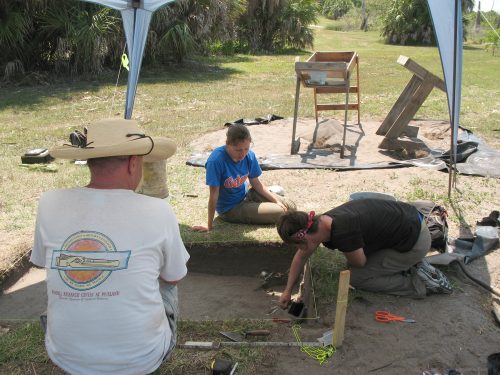On May 18, Melissa Ayvaz began a new excavation on Citrus Ridge at the Pineland Site Complex. The dig is expected to last until June 18.

The study is intended to test the hypothesis that about 1700 years ago at least one high-intensity hurricane impacted Pineland’s landscape and its people. The results will form a part of Melissa’s masters thesis in the Department of Anthropology at the University of Florida, chaired by Bill Marquardt.
The findings from a nearby 1992 excavation suggest that a powerful hurricane hit Pineland around A.D. 300. Storms occur over short time intervals, but – as Pine Islanders who lived here in 2004 well know – they can have both immediate and long-term effects on people’s lives. The Calusa were no exception.
Specifically, a thin sandy layer contained surf clam shells (some articulated), sea urchin remains, pen shells, and sea- turtle bones, indicating animals that live in high-salinity habitats. Because the Pineland site is situated in an area of typically lower salinity, we reason that the animal remains must have been swept in from the barrier islands to the west due to a powerful storm surge.

Overlying this layer of animal remains is a sand layer that may have been deposited by a second surge associated with the same storm. The source of the sand may have been the Citrus Ridge, so the current dig is designed to gain a better understanding of the Citrus Ridge deposits so they can be compared to those from the previous 1992 excavation. Melissa will focus her analysis on faunal and sedimentological assemblages to tease out the subtle signatures that would characterize a storm surge. The excavations will proceed slowly and carefully in order to provide information at a scale and resolution rarely accessible to archaeologists.
The new excavation is located right next to the Calusa Heritage Trail. Visitors are welcome any day, Wednesdays through Saturdays, through June 18. Lab work on Tuesdays at the Ruby Gill House will involve washing and cataloging artifacts, following museum archival standards and guidelines.
This article was taken from the Friends of the Randell Research Center Newsletter Vol 10, No. 2. June 2011.